Sakkie Mouton
Mouton Noir Wines
Oregogne Chardonnay 2012
Absolute phenomenal wine. Very well balanced. Everything I can hope from a Bourgogne, I mean, Oregogne, Chard. — 8 years ago
Baron Philippe de Rothschild
Le Rosé de Mouton Cadet Bordeaux Rosé Blend 2015
Notes of strawberry and butter. Can't go wrong with a rosé! — 8 years ago
Château Pichon Longueville Comtesse de Lalande
Pauillac Red Bordeaux Blend 1982
Château Mouton-Baron-Philippe
Pauillac Red Bordeaux Blend 1970
Double Mag beauty. Real sassy B — 9 years ago
Château Haut-Brion
Pessac-Léognan Red Bordeaux Blend
Tight; closed; a bit rough. Short sweet finish. More depth than 94 Mouton — 9 years ago
Louis Metaireau
Grand Mouton Muscadet de Sèvre-et-Maine Melon de Bourgogne 2013
Bright. Pure. Salty thirst quenching bucket of yes please — 10 years ago
Sandbanks Winery
Sandbanks Ontario Mouton Noir Foch Baco Noir 2014
My new favourite Sandbanks wine, and maybe my new favourite Ontario wine period. — 10 years ago
Château Croix Mouton (Jean-Philippe Janoueix)
Bordeaux Supérieur Red Bordeaux Blend 2010
Very good glou glou — 11 years ago
Baron Philippe de Rothschild
Réserve Mouton Cadet Red Bordeaux Blend 2012
First time drinking a Bordeaux and was very pleased with this one. — 11 years ago
Baron Philippe de Rothschild
Réserve Mouton Cadet Sauternes Sémillon Sauvignon Blanc 2010
Peaches. Millions of peaches, peaches for me. A perfect match for the chocolate and pear dessert. Add some age and this wine will be unforgettable. Pretty close already. — 11 years ago
Château Brane-Cantenac
Grand Cru Classé en 1855 Margaux Red Bordeaux Blend 2005
I have a six-pack of this 05. I thought after 10 years in bottle, it would be interesting to check in on its evolution. While tasty, I’ll wait another 8-10 to open another. Even after 2-3 hours in the decanter, it’s still a very young adolescent. On the nose, slightly sour blackberries & dark cherries, dark currants, baked black plum, haunting blue fruits, anise, whiff of spice, steeped tea, dry stones, dry crushed rocks with dry top soil, caramel, vanilla with fresh & dry red florals. The body is thick & full. Tannins are starting to round out. It’s velvety on the palate. The fruits are; bright, fresh & ripe and really show the greatness of the 05 vintage. Dark currants, blackberries, dark cherries, baked black plum, haunting blue fruits, baked strawberries, cherries, raspberries on the long set, dark spice, clay & loamy dry top soil with crushed rocks, dry stones, cigar with ash, graphite, dry stems, slight herbaceous character, mint, used leather, clove, caramel, vanilla, fresh & dry red florals with violets. The round acidity is about perfect. The structure and length are still strong. The balance is in harmony. As for the long finish, it’s lush, ruby, rich and well polished. Photos of; Chateau Brane Cantenac, large wood vats, Henri Lurton and Estate vines. Producer notes and history...Chateau Brane Cantenac began in the early 17th century. At the time, the estate was known as Domaine Guilhem Hosten. Even that far back, wine was produced from the property. In fact, the wine was so highly regarded it was one of the more expensive wines in Bordeaux. It sold for almost as much money as Brane Mouton. This is interesting because of who went on to buy the vineyard in the 1800’s. The Baron of Brane, also known as “Napoleon of the Vineyards”, purchased the Chateau in 1833. At the time of the sale, the estate was called Chateau Gorce-Guy. To get the funds needed to purchase the Margaux vineyard, the Baron sold what is now called Mouton Rothschild, which was at the time of the sale, known as Chateau Brane-Mouton. Not such a good move with hundreds of years in hindsight! In 1838, the Baron renamed property taking his name and the name of the sector where the vineyards were located and called it Chateau Brane Cantenac. The Chateau later passed to the Roy family, who were well-known in the Margaux appellation in those days, as they owned Chateau d’issan. Moving ahead to 1920, the Societe des Grands Crus de France, a group of merchants and growers that owned several chateaux located in the Medoc including; Chateau Margaux, Chateau Giscours, and Chateau Lagrange in St. Julien, purchased Chateau Brane Cantenac. Five years later, M. Recapet and his son-in-law, François Lurton, took over Brane Cantenac along with Chateau Margaux. Lucien Lurton (the son of François Lurton) inherited Brane Cantenac in 1956. Today, the estate is still in the hands of the Lurton family. Brane Cantenac is owned and run by Henri Lurton. After being given the responsibility of managing Brane Cantenac, it was under the direction of Henri Lurton that large portions of the vineyard were replanted. Vine densities were increased, the drainage systems were improved and the plantings were also, slowly changed. The vineyard of Brane Cantenac is planted to 55% Cabernet Sauvignon, 40% Merlot, 4.5% Cabernet Franc and .5% Carmenere. Carmenere was used for the first time in the 2011 vintage. The only other Chateau I know that still uses Carmenere is Clerc Milon. The 75 hectare Left Bank vineyard of Brane Cantenac is essentially unchanged since it earned Second Growth status in the 1855 Classification. At least that is the case with the 45 hectares used to produce the Grand Vin of Brane Cantenac. Those 45 hectares are planted surrounding the Chateau. Those vines are located just in front of the Cantenac plateau and are the best terroir that Brane Cantenac owns. They have other parcels, which are further inland and much of those grapes are placed into their second wine, Le Baron de Brane. Those additional hectares can be divided into 3 main sections. Behind the Chateau, they have 15 hectares of vines on gravel and sand, 10 hectares across the road with sand, gravel and iron and a 13 hectare parcel with gravel called Notton, which is used for their second wine. The vineyard is planted to a vine density that ranges from 6,666 vines per hectare on the plateau and up to 8,000 vines per hectare for the vines located behind chateau, in their sandier soils. The higher levels of vine density are always found in the newer plantings. The terroir of Brane Cantenac consists of deep gravel, sand and clay soil. Experiments in the vineyards are currently looking at becoming more organic in their vineyard management. Today, more than 25% of Brane Cantenac is farmed using organic farming techniques. It is expected that over time, the amount of hectares farmed with organic methods will be increased. Brane Cantenac has gone through 2 relatively recent modernization’s in 1999, when they added began adding the first of their smaller vats to allow for parcel by parcel vinification and then again in 2015 when they completed a much more complete renovation of their cellars and vat rooms. While Brane Cantenac is a traditional producer, they are no stranger to technology as they were one of the first estates to embrace optical grape sorting machines. In very wet vintages, they can also use reverse osmosis. To produce the wine of Chateau Brane Cantenac, the wine is vinified in a combination of temperature controlled, traditional, 22 oak vats, 18 concrete tanks and 20 stainless steel vats that vary in size from 40 hectoliters all the way up to 200 hectoliters, which allows for parcel by parcel vinification. 40% of the fermentation takes place in the oak vats. The oldest vines are vinified in vats that are selected to allow for separate parcel by parcel vinification. The younger vines are vinified more often together in the same vats. However, the Carmenere is entirely micro-vinified, meaning that those grapes were completely vinified in barrel, using micro-vinification techniques. This can also happen because the amount of grapes produced is so small. Some vats can be co-inoculated, meaning they go through alcoholic fermentation and malolactic fermentation simultaneously. At Chateau Brane Cantenac, malolactic fermentation takes place in a combination of French oak tanks and barrels. The wine of Brane Cantenac is aged in an average of 60% new, French oak barrels for 18 months before bottling. The initial 2 months of aging is done with the wine on its lees, which adds more depth to the wine. There second wine is Le Baron de Brane. Le Baron de Brane is not new. In fact, previously, the second wine went under the name of Chateau Notton, which took its name from one of the main parcels where the grapes were planted. During the late 1950’s and into the 1960’s, having a second wine was important as the estate declassified 3 vintages, due to extremely poor, weather conditions in 1956, 1960 and 1963. Production of Chateau Brane Cantenac is about 11,000 cases per year. — 8 years ago
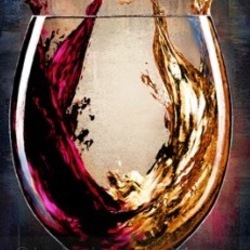
Louis Metaireau
Petit Mouton Muscadet de Sèvre-et-Maine Melon de Bourgogne 2013
A deeply satisfying Muscadet from the Loire. Crisp, bright and mildly sweet; this is a great bottle of wine on a hot summer day! — 10 years ago
Mouton Noir Wines
Horseshoes and Handgrenades American Red Blend
My favorite wine — 10 years ago
Mouton Noir Wines
Knock on Wood Chardonnay 2013
Light Chardonnay with very smooth acidity. Crisp, fresh fruit that is balanced without being oaky or buttery. Really great. — 11 years ago
Château Croix Mouton (Jean-Philippe Janoueix)
Réserve Bordeaux Supérieur Red Bordeaux Blend 2011
Excellent. Will be going back to buy more, especially at $9.99 😊 — 11 years ago
Mouton Noir Wines
P-Oui Willamette Valley Pinot Noir
To say that this pinot is the best I've ever had is truly an understatement. It is sultry red with a healthy balance of fruit and spice. The taste is smooth, complex, and it leaves you craving more. Like a jam session from your favorite band. I was truly sad when I finished the bottle. I look forward to having it again. — 8 years ago
Château Clerc Milon
Pauillac Red Bordeaux Blend 2005
On the nose; dark cassis, blackberries, blueberries, dark cherries, black plum, black raspberries, caramel, dark, rich soil, dry stones, caramel, dry stems, fresh violets & dark, fresh & dry florals. The body is full, round, lush, thick with nicely resolved, soft, velvety tannins. It glides in the over the palate. Creamy, lush, thick; blackberries, dark cherries, black raspberries, black plum and poached strawberries bring up the rear of the fruits. Mocha chocolate, caramel, dark soil, stones, steeped tea, crushed rocks, bramble, suede leather, liquid violets, fresh dark florals & acidity is soft and perfect. The finish is flat out pure elegance. Creamy fruits and beautiful complimentary soft, semi-sweet earthiness. This is my first of bottle of 10. I'll have another each year for the next nine years. Enjoy noting the changes in the bottle. It's drinking beautifully and has at least another 10 plus years of good drinking ahead. Photos of; Clerc Milon, their barrel room, private tasting room and our friend Jean who is their Winemaker since 09. Prior to that he was the Assistant Winemaker at Opus One for 10 years. He is perhaps the nicest person we've met. We are not the only ones to say that. He was nice enough to allow us to work the 12 Clerc harvest and scheduled a dinner for us at Chateau Mouton Rothschild. An amazing dinner accompanied by 76 Mouton out of 6L. Andy Warhol did the label. He also managed for us to have lunch with the Baroness the next day where 82 Mouton was served. May she RIP. Sadly, she passed away just short of two years later. The Clerc vineyards are adjacent to Chateau Mouton Rothschild. Love the two Baffoons on their label. Happy Father's Day to all the fathers out there! Cheers. 🍷 — 8 years ago
Domaine Laurent Mouton
Clos Charlé Givry 1er Cru Pinot Noir 2012
Blind tasting: light ruby color, crushed gravel, cranberry, floral. Soft mouth feel, tannins are still strong. Persistent length. — 9 years ago
Mouton Noir Wines
Love Drunk Rosé Blend
Very very nice, easy and light! Definite repeat — 9 years ago
Château Puy Mouton
Saint-Émilion Red Bordeaux Blend 2010
#humblegrape — 10 years ago
Mouton Noir Wines
O.P.P. Pinot Gris
Edda have this one to me — 10 years ago
Château Latour
Premier Grand Cru Classé Pauillac Red Bordeaux Blend 1986
Usually have the best wine of the week at Sunday lunch. The 86 Latour is this weeks wine of the week. Hi Tannic year in Bordeaux and many experts think that Latour lost the plot in 86 with most thinking that Mouton was the wine of the vintage. This wine had lots of leather savouriness with no fruit character but still a class act. A good wine but not at the usual superlative Latour standard. — 10 years ago
Mouton Noir Wines
Lieu-Dit Pinot Noir 2011
This Pinot Noir has a great deep flavor! Definitely worth trying for a unique Pinot. — 10 years ago
Domaine Laurent Mouton
La Grande Berge Givry 1er Cru Pinot Noir 2011
Le fameux domaine en procès avec M.Rothschild !
Agréable, pinote... — 11 years ago
Mouton Noir Wines
Oregogne Pinot Noir 2010
Soft, fruit forward, opens up to a lightly spice finish. — 13 years ago
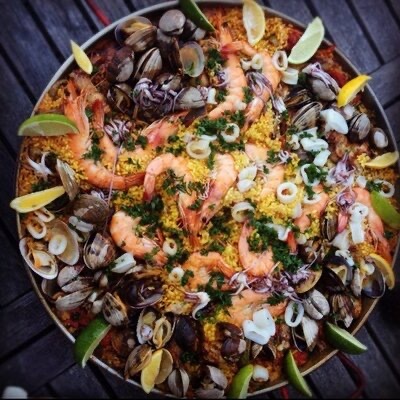





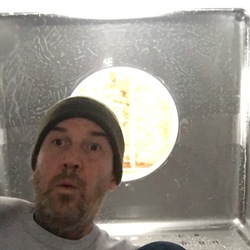
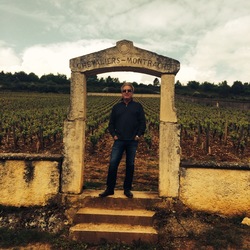


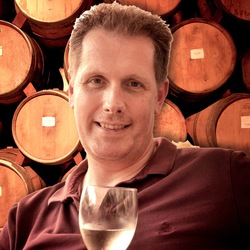

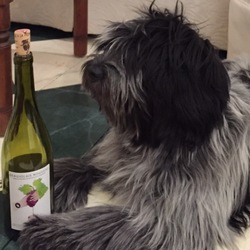






Christine
2013. Vintage. Love it from the 1st sip till bottomless — 6 years ago